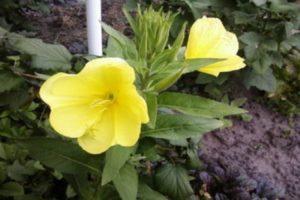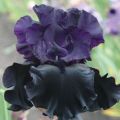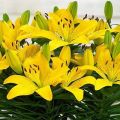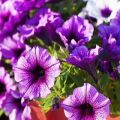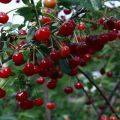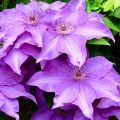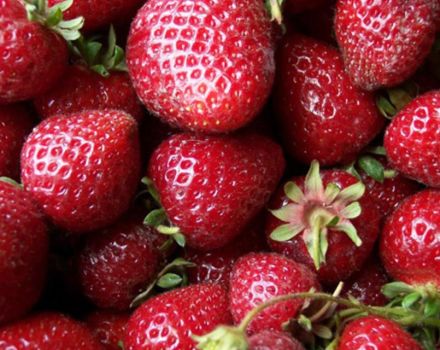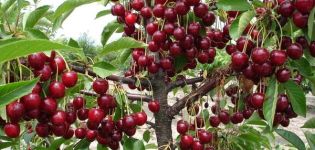Planting and caring for aconite in the open field, cultivation and breeding methods
There are many names for aconite among the people. It is often called wolf root, grass king, fighter, wolf-killer, blue-eyed or iron helmet. Aconite can only be planted in open ground. When caring for him, do not forget that this is a poisonous plant. But this applies more to natural species. And yet one should not plant aconites where children are often.
Description and characteristics of aconite
Aconite is a perennial herb that grows up to 1.5 m tall. They refer him to the Buttercup family. The leaves are shiny, dark green. The stems of the plant are long and straight. Flowers are often blue or purple, sometimes white. In shape they resemble a helmet or a lady's shoe, in this regard, many legends have been created about the flower.
New plants grow from last year's tubers every year. This is how the Aconites "capture" the territory. Their place increases by 2-3 cm per year.
Varieties and varieties
There are many types of aconites; in our latitudes, the nodule species and its garden forms are more common. Other species are often found depending on the climatic zones.
Aconite East
On the stem up to 1.5 m high, there are inflorescences of white, yellow and rarely pale lilac. The flowering period begins in July.
Aconite Violet
For aconites, this species is undersized, since it does not grow higher than 1 m. It has large purple flowers, sometimes they are found white. The flower raceme reaches up to 40 cm. It blooms in July-August.
Fischer's Aconite
The height of the stem reaches 1.6 m. Leaves are dense, palmate cut into 5-7 lobes. The flowers are bright blue, collected in a brush. Blooms from July to October.
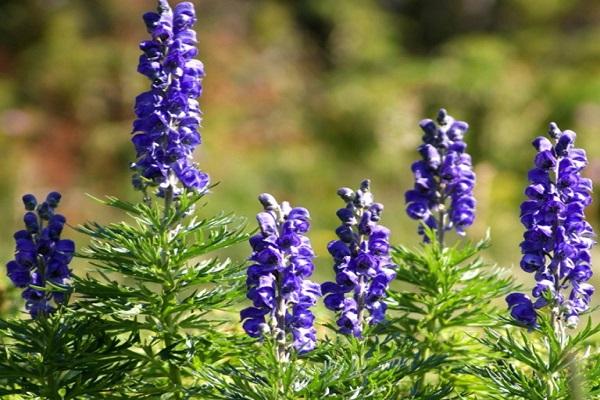
Aconite Cammarum
Has thinner stems and delicate foliage. Flowers of a more elongated shape. Color - pale pink, lilac, white or blue. Height 130-140 cm.
Aconite Curly
Lying stem up to 4 m long. The flowers are blue, blooming in August-September. An unpretentious plant, loves semi-shady areas. Curly Aconites are used for vertical gardening.
Akonit Arends
Arends's hybrid, which is obtained by interspecific crossing, grows up to 1 m in height. The flowers are blue or white, two-colored plants are often found. Flowering occurs in mid-summer.
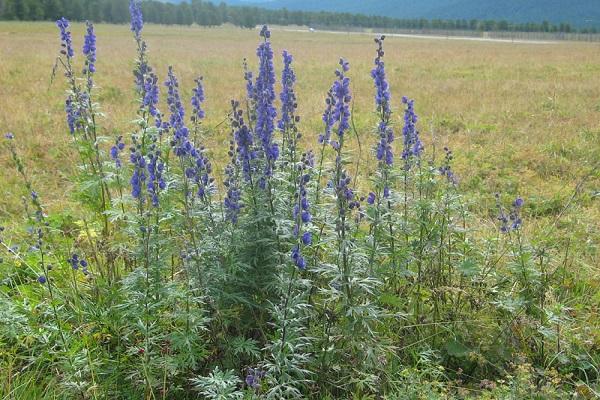
Aconite Bearded
Although this variety has a slightly gloomy yellowish color, it looks quite impressive and unusual. The flower cluster is relatively short, only 25 cm. The plant height is 1.2 m. It blooms in July.
Planting a flower
You can plant a flower in any soil, you should only avoid waterlogged, gravelly and sandy soil.
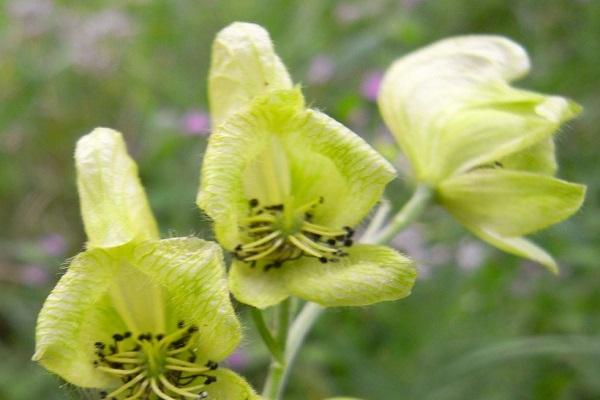
Site selection and soil preparation
Most of these colors prefer shady areas. For climbing species, choose the most shaded and coolest places. They do not tolerate direct sunlight, getting burns from them. Exceptions are Aconite Karmikhel and Aconite Antorra, they should be planted in elevated sunny places.
In autumn, there should be no stagnation of water in the area where aconites will grow. Otherwise, plant roots will rot and die.
Before planting, organic compounds and mineral fertilizers are applied to the soil. For the prevention of diseases, biofungicides are also introduced.

Landing technology
For planting, tubers are chosen, which have a large bud and strong roots. 2-3 roots are placed in a prepared hole 20 cm deep, one is allowed. The distance between seedlings should be at least 20 cm.
You can also plant cuttings or part of a divided bush. The planting process is the same. The planted shoots quickly harden and grow into a strong bush.
When to plant
Planting through tubers or seeds should be carried out in the fall. Having chosen seeds as a raw material for planting, it must be borne in mind that the first flowering will occur no earlier than 3-4 years later.
Transfer
Flowers should be transplanted to a new location every 4 years. Better to transplant in the fall. This is done to improve flowering and a more flavorful bush.
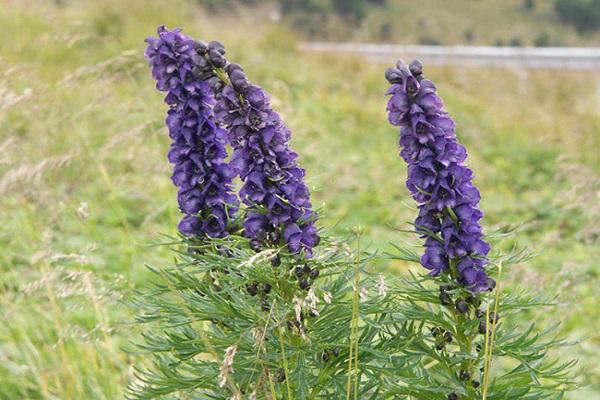
Care Tips
Aconites are picky about leaving, but still you can't do without some simple steps.
Fertilizer and feeding of aconite
After awakening the soil from winter rest, organic fertilizers must be applied. This can be infusion of mullein or bird droppings. It must be diluted in water at room temperature. Add 2 liters of infusion to 10 liters of water.
After fertilization, the plant is watered with clean water to wash off particles of substances from the shoots. They also use compost, pouring it under the bushes. This will give rich hues to the flowers of the plant.
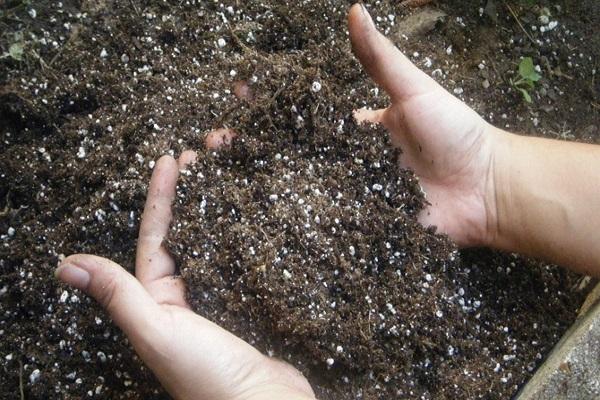
During the period of bud formation, the bushes are fed with nitroammophos. 40 grams of the drug is added to 10 liters of water. In the future, the plant is fed with phosphorus-potassium fertilizer, pouring it under the bushes before watering. At least 20-25 days should pass between dressings.
Important! It is impossible to use ash for feeding the bushes. It reduces the acidity of the soil, and this negatively affects the plants..
Watering the plant
Crops should be watered sparingly, because they do not tolerate too much moisture. In dry periods, irrigation is carried out 2 times a month, pouring cool water under the root of the plant. The rest of the time they are not watered at all.
Loosening the soil
It is imperative to loosen the soil around the aconite flowers, because if a crust forms from above, then oxygen will not flow to the root system of the plants. It is also necessary to weed the weeds so that they do not deprive the bush of nutrients.

Protection against diseases and pests
Bushes are susceptible to both diseases and various pests.
Powdery mildew
The plant is most often affected. This is a fungal disease that manifests itself as a white bloom on all ground parts of the bush. The plant gradually withers until it dies completely. To get rid of the disease, you need to remove all affected parts of the bush, remove the topsoil and replace it with a new one. Treat the plant with a fungicide.
Ring mosaic
The leaves are covered with a large number of spots of different sizes and colors.They are yellow, brown or grayish. The reason for the appearance is a virus that spreads aphids. The disease is practically not cured, so preventive measures should be taken to prevent it. The main action is the fight against aphids.
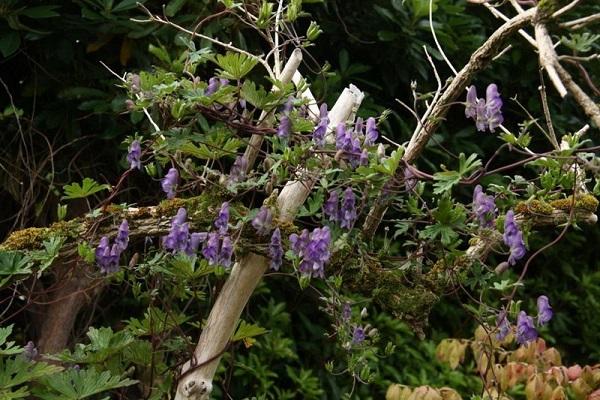
Greening flowers
Also a viral disease. Because of it, the inflorescences are deformed and acquire a green tint. The carriers are sucking insects and herbivorous mites. Having noticed such lesions on the bushes, they should be immediately removed and disposed of so that the disease does not spread to other plants.
The most common pests are.
Nematode
The smallest worm, which, despite its size, causes quite a lot of harm to the plant. To combat it, the bushes are sprayed with solutions of "Lindane", "Phosphamide" and "Mercaptophos".
Aphid
Small black flies, one colony of which is capable of destroying an entire plant. To combat it, the bushes are treated with insecticides like "Arrivo" or "Confidor". They also use biological drugs - "Akarin", "Aversectin" and "Fitoverm".
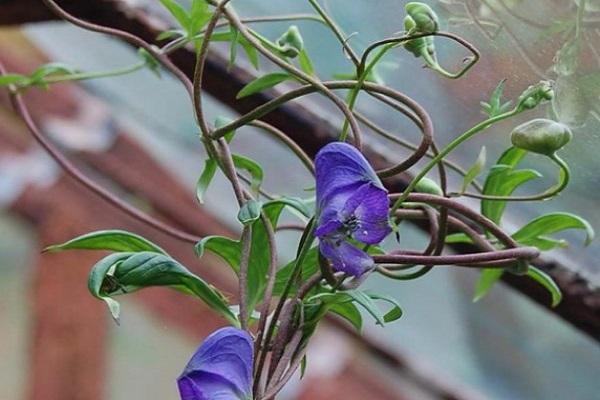
Reproduction of culture
Aconite can be propagated in several ways:
- Cuttings. This is the fastest way to reproduce. In the spring, while the young shoots have not yet become hollow inside, they are cut off and immersed in the soil. Cover with foil from above, forming a greenhouse.
- Division of the rhizome. Also an easy way. In spring, the lateral part of the rhizome is separated and planted separately.
- Seeds. They are sown in the fall, immediately after harvest. The next year, their germination rate drops by 50%. The seeds are sown in moist soil and await sprouting in the spring.
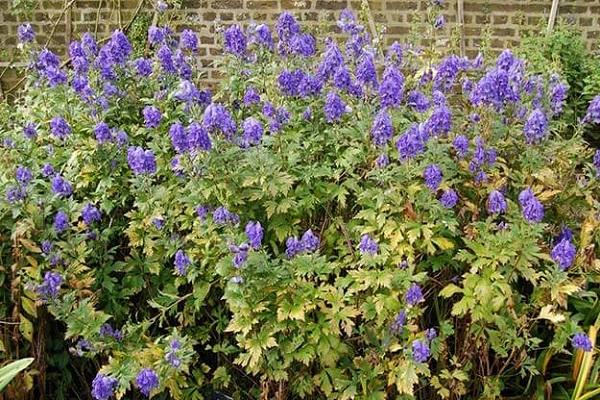
Use in landscape design
Aconite bushes look spectacular on plots both alone and in groups. Also, when decorating flower beds, they are often combined with other flowers, for example, with phlox, yarrow and daylilies.
Due to the height of the plants, landscape designers use them as a backdrop for other flowers. Curly representatives of aconites are planted near hedges and arbors. Their vines twine around the fences, thus creating hedges.
You can also experiment with color, because aconites have quite bright colors. For example, blue varieties will go well with yellow or red flowers.
When growing aconites, one must not forget about one's safety, although garden plants are not too poisonous, but when working with them, it is better to play it safe and wear rubber gloves.
